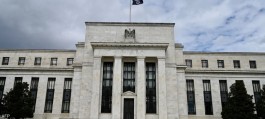Oil prices fell during trading on Friday, July 19, by more than two dollars at the settlement, with renewed hopes for a ceasefire in the Gaza Strip, and the rise of the dollar also contributed to increasing pressure on prices.
Brent crude futures fell $2.48, or 2.91%, to settle at $82.63 a barrel, posting a second straight weekly loss of 2.82%.
U.S. crude futures fell $2.69, or 3.25%, to settle at $80.13 a barrel, posting a second straight weekly loss of 2.53%.
This comes after US Secretary of State Antony Blinken said on Friday that a long-awaited ceasefire between Israel and the Palestinian Islamic Resistance Movement Hamas was on the horizon, according to Reuters.
Blinken said: I think we are within the 10-yard zone and moving toward the ultimate goal of an agreement that would result in a ceasefire, return the hostages to their homes and put us on a better path to trying to achieve lasting peace and stability.
The ceasefire increases the possibility that the Yemeni Houthi group will reduce its attacks on commercial ships in the Red Sea, as the group announced that it was launching the attacks in support of the Palestinians in the war in the Gaza Strip.
The dollar index rose after stronger-than-expected U.S. labor market and manufacturing data this week. A stronger dollar reduces demand for U.S.-denominated oil from holders of other currencies.
Chinese officials said Friday that a list of economic targets reaffirmed at the end of a key Communist Party meeting this week contains a large number of complex contradictions, indicating a bumpy road ahead for policy implementation.
China's economy grew at a slower-than-expected 4.7 percent in the second quarter, official data showed, raising concerns about the country's oil demand.
A global technical glitch on Friday disrupted work in many industries and sectors, with airlines halting flights, some media outlets stopping live broadcasts, and banking and healthcare services being affected.



































